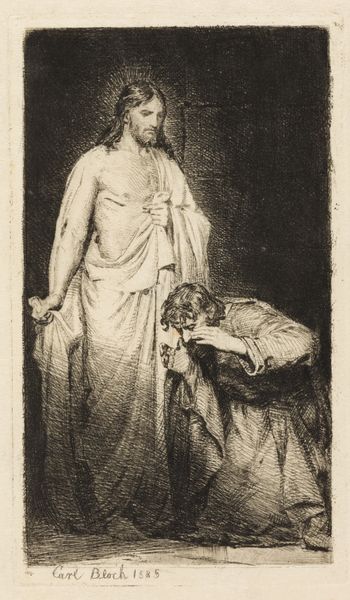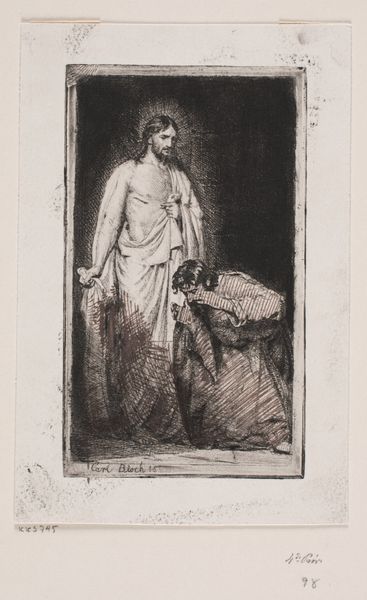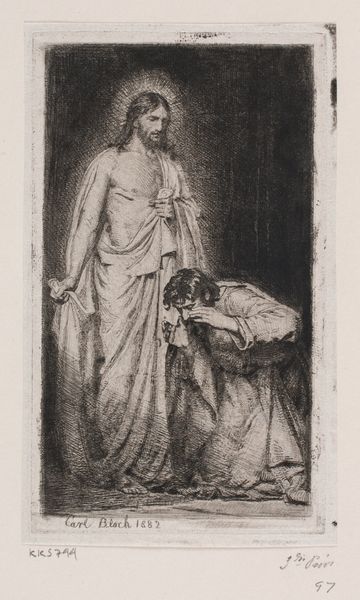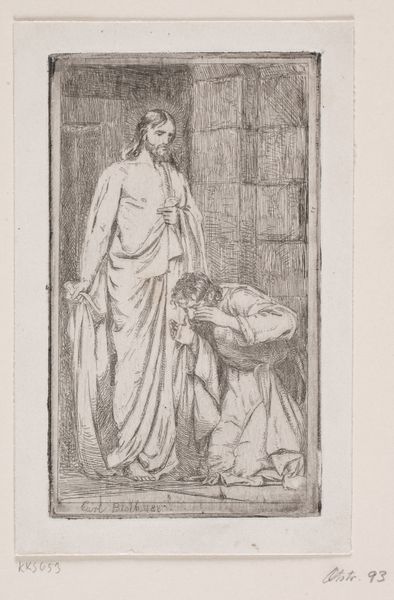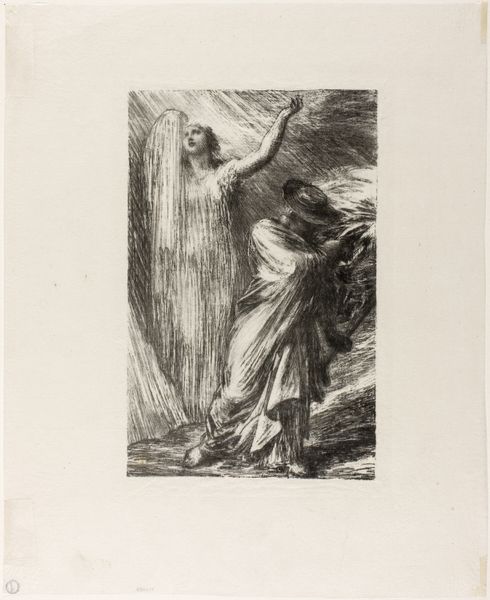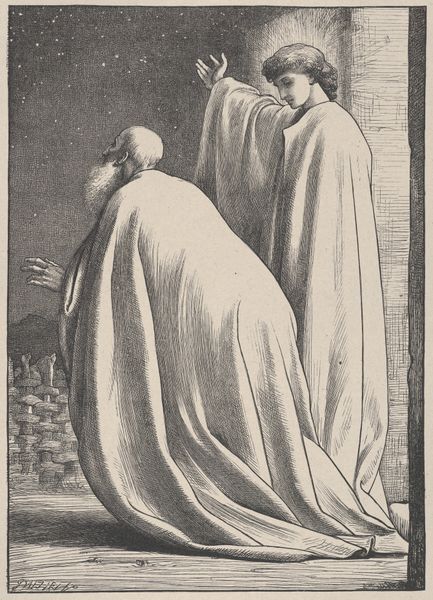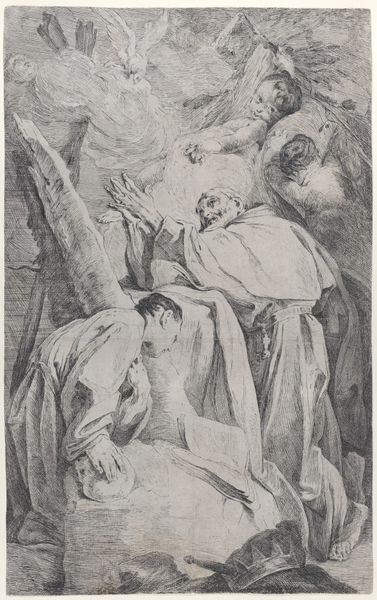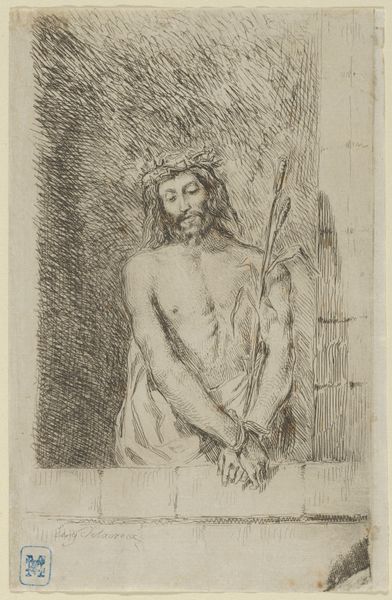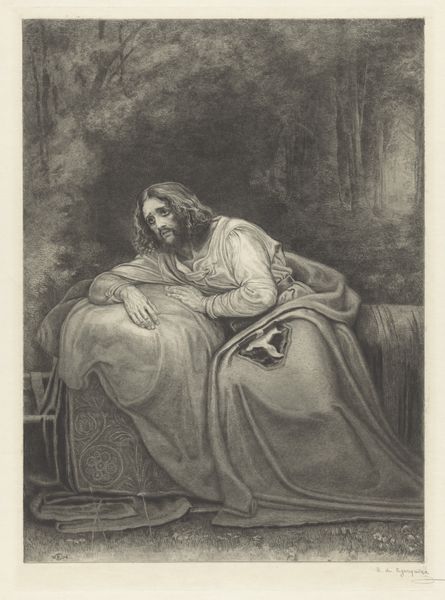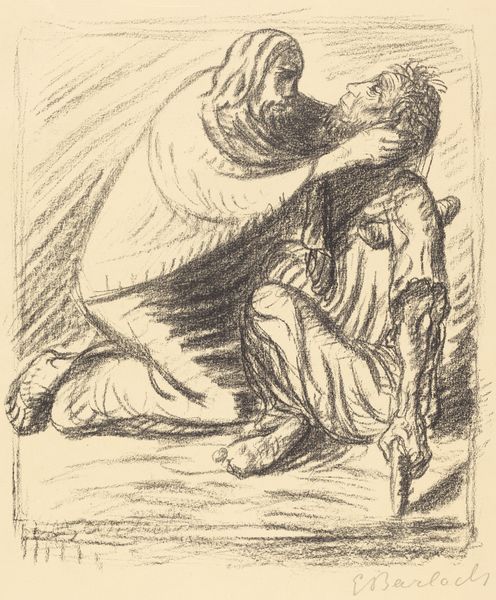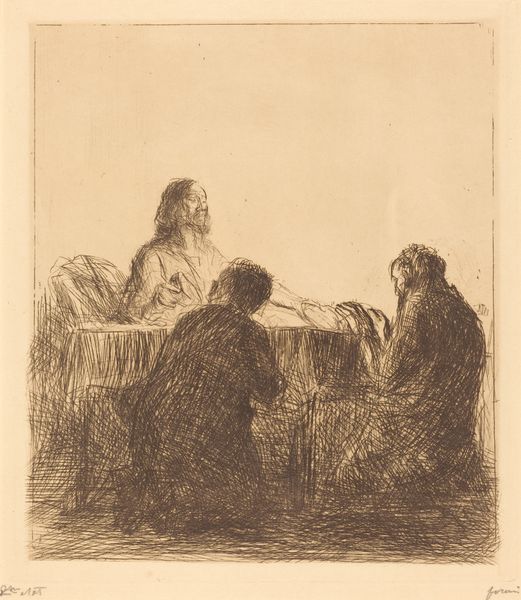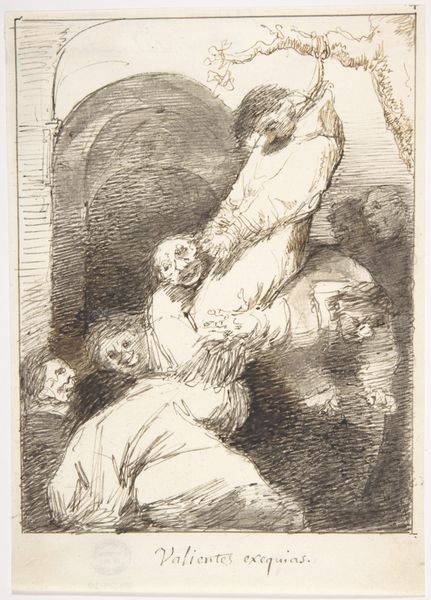
drawing, print, etching, ink
#
drawing
# print
#
etching
#
figuration
#
ink
#
history-painting
#
realism
Dimensions: 139 mm (height) x 89 mm (width) (bladmaal), 120 mm (height) x 69 mm (width) (plademaal)
Curator: Here we have Carl Bloch’s “Christ and the Doubting Thomas,” created in 1882. The piece is an etching, rendered in ink, on either drawing or print media. It is currently held in the collection of the Statens Museum for Kunst. Editor: It’s arresting. The darkness practically envelops Thomas, contrasting with the ethereal, almost luminous quality given to Christ. It’s visually heavy. Curator: The strategic use of light is central, no? Observe how the lines are etched more densely around Thomas, emphasizing his physical and, metaphorically, his spiritual obscurity. The process allows for such incredible depth in the midtones. I would propose that in employing these sharp contrasts, Bloch uses formal methods to embody the story’s moral dimension. Editor: Right, but Bloch's own faith journey adds layers. This work appeared amidst shifting social attitudes toward religion in late 19th-century Europe. Consider the context. How was printmaking democratizing religious art for a wider, potentially more skeptical, audience? The labor invested into these reproduced images challenges notions of the ‘aura’ of original art. Curator: I cannot argue against your point, of course. The industrial process and materials themselves inherently possess social weight. Yet, let’s consider the composition. Christ stands almost in contrapposto, one foot slightly forward, exhibiting grace but simultaneously power and resolve. This deliberate classical structure invites further considerations of symbolism in realism. Editor: Good points! The realism here isn’t about mere photographic accuracy, but about conveying conviction through form and materiality, right? We should be asking, how would his workshop assistants influence these final product in subtle ways? Each step involved specific labor. I see a material record embedded. Curator: The dialogue here isn’t just between the figures depicted but, perhaps unconsciously, an echo of a much broader struggle between tradition and modernity. What has really moved me is recognizing how an apparently simple study in etching reveals depths relating to religious convictions of its maker in interplay to a skeptical era! Editor: Exactly! Bloch’s choice of printmaking extends this visual, cultural conversation to more hands than anyone at the Royal Danish Academy of Fine Arts ever could have! Let's make sure our audience also considers that labor while viewing this piece.
Comments
No comments
Be the first to comment and join the conversation on the ultimate creative platform.
